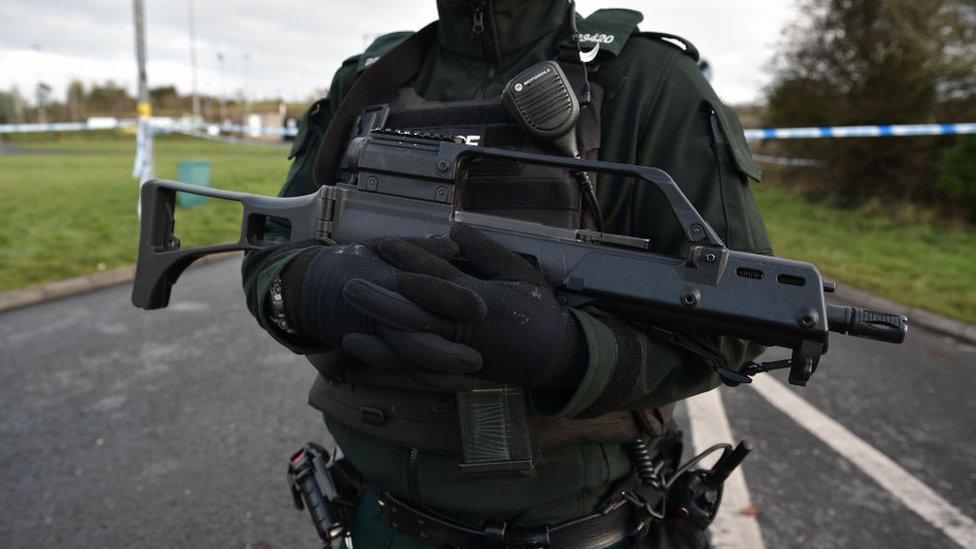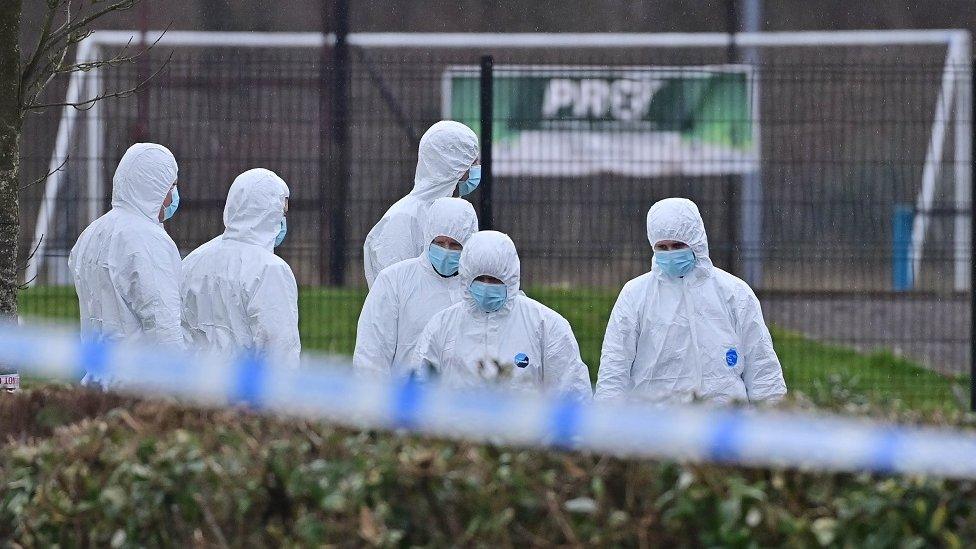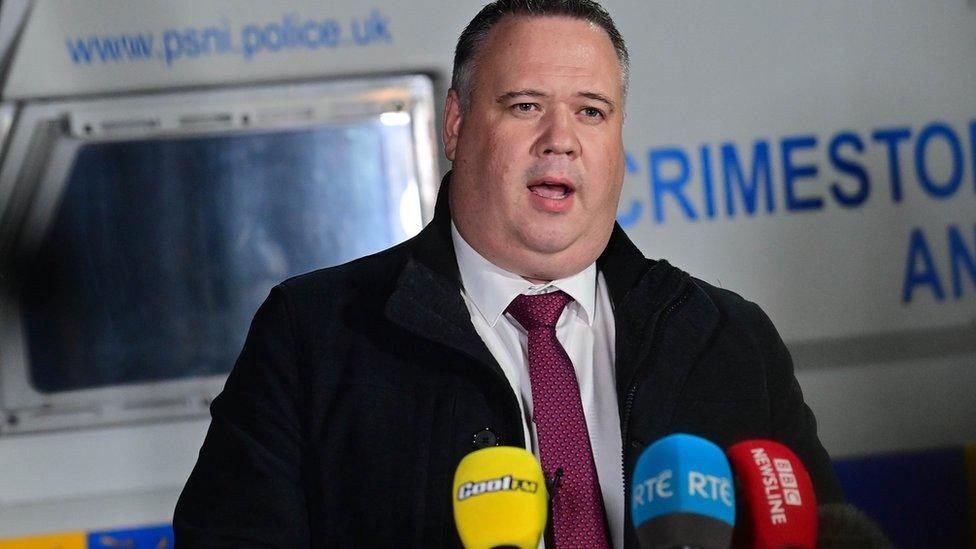Dissident republicans: Why Northern Ireland police are still a target
- Published

Attacks on police continue 25 years after the end of the worst of the Troubles
The February shooting of Det Ch Insp John Caldwell in Omagh, County Tyrone was a reminder of the threat still faced by police officers in Northern Ireland.
During almost 30 years of violence known as the Troubles, 302 police officers were killed.
Since the Good Friday Agreement in 1998 ended the worst of the violence, the threat faced by the police and other security services has decreased dramatically.
But two police officers and two prison officers have been killed by dissident republicans since then, and there have been many other attempts at murder.
In 2022, the terrorism threat level was downgraded for the first time in 12 years but, as a result on Det Ch Insp Caldwell's life, it has gone back up from substantial to severe.
This means the risk of attack or attacks has gone from "likely" to "highly likely".
So, why do attacks on police continue 25 years after the end of the Troubles?
Who are dissident republicans?
The republican movement wants Northern Ireland to leave the UK and unite with the Republic of Ireland.
During most of the Troubles the Provisional IRA was by far the biggest and most influential violent republican paramilitary group.
But in the 1980s and 1990s it and its political wing Sinn Féin began to make moves which eventually led to ceasefires and Sinn Féin's support for the Good Friday Agreement peace deal.
Members who opposed these moves broke away from the Provisional IRA and formed new groups, such as the Continuity IRA, Real IRA and - later - the New IRA.
They remained committed to using violence to try to bring about a united Ireland, something which has been rejected by Sinn Féin for many years.
In early March, Arm na Poblachta (Army of the Republic) said police officers' families would be considered targets.
Smaller than the other dissident republican groups, it emerged in 2017 but has not been as active as the New IRA or the Continuity IRA.
Why do they oppose the Good Friday Agreement?
The peace deal means that Northern Ireland remains part of the UK until a majority of people living there vote for a change.
The rules of Northern Ireland's devolved government at Stormont - which is currently suspended - mean republicans, nationalists, unionists and other political groups all have to share power together.
Dissidents are opposed to Northern Ireland staying in the UK in any circumstances.
They also believe the only legitimate government of Ireland is the IRA's leadership council.
This goes back to 1916 when Irish republicans staged a rebellion against British rule and declared a breakaway government.
Who supports them?
The support for dissidents is very small.
All of Northern Ireland's main political parties are opposed to their actions.
The biggest and most active group is the New IRA, whose main areas of operations are in Londonderry and County Tyrone.
Previous security assessments estimated it had about 100 members prepared to commit acts of terrorism.
Its support base was said to number about 500.
What have they done?
Dissident republicans have murdered two police officers - Constable Stephen Carroll in 2009 and Constable Ronan Kerr in 2011.
Constable Carroll's killing came 48 hours after two soldiers - Sapper Mark Quinsey and Sapper Patrick Azimkar - were shot dead.
They also killed two prison officers - David Black in 2012 and Adrian Ismay in 2016.
They have also been blamed for a number of bomb attacks, including at Palace Barracks in Holywood, external where MI5 is based in Northern Ireland, as well as many attempts to kill police using guns and bombs.
Some officers have been seriously injured in the attacks.
The New IRA said it was responsible for killing Lyra McKee, a journalist shot dead while observing rioting in Derry in 2019.
What have security forces done to stop them?
The New IRA was put on the back foot by several successful security operations run by MI5, leading to the first reduction in the terrorist threat level in Northern Ireland in a decade.
A number of suspected members of the group were arrested after MI5 bugged two alleged meetings of the New IRA's executive in 2020.
Bugging operations were also carried out against the Continuity IRA.
But after a lull in activity the New IRA re-emerged in November with a bomb attack on a police patrol car.
The attack on John Caldwell is the most serious incident in many years and demonstrates that while a small organisation, with little support, it retains the capacity to strike against police officers.
In August 2023, police said a list containing the details of 10,000 members of staff, from officers to civilian staff, was in the hands of dissident republicans.
It had been released mistakenly as part of a response to a freedom of information request and subsequently appeared online.
PSNI Chief Constable Simon Byrne said dissidents could use the list, of surnames, initials and the ranks of officers, to generate fear and potentially target staff.
Related topics
- Published24 February 2023

- Published27 February 2023

- Published14 August 2023
